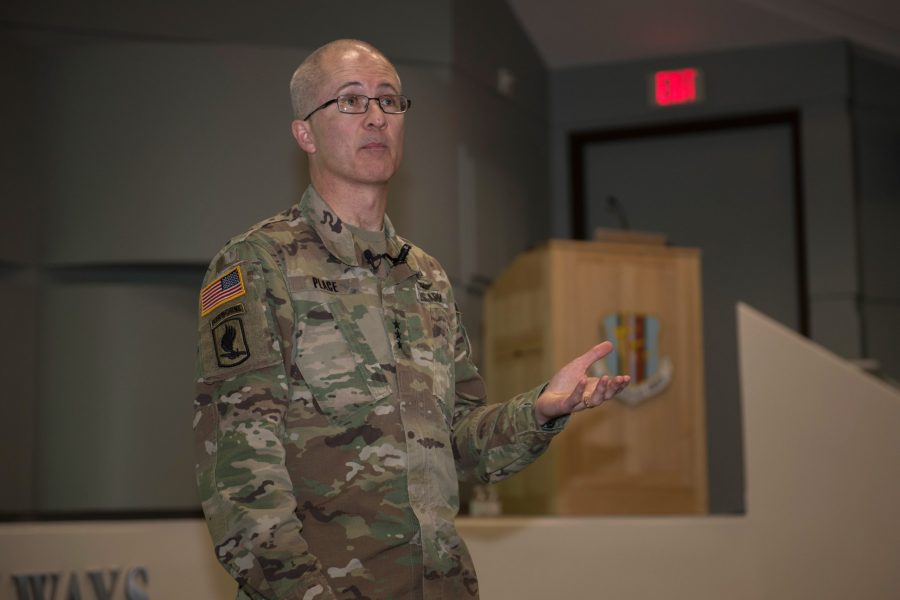A Pentagon plan to shutter or downsize the scope of services offered at 50 military hospitals and/or clinics across the country—12 of which are located on Air Force bases—has been slowed by the COVID-19 pandemic, Defense Health Agency Director Army Lt. Gen. Ronald J. Place told Air Force Magazine in an exclusive interview. As a result, facility closures and changes are unlikely to take place before next summer, he said.
After the fiscal 2017 National Defense Authorization Act charged the Defense Department with taking a hard look at its hospital and clinic footprint, DOD analyzed over 300 of its stateside facilities and proposed that 50 of them be restructured to boost operational- and medical-force readiness, according to a report Under Secretary of Defense for Personnel and Readiness Matthew P. Donovan sent to Congress in February, Air Force Magazine previously reported. Information about how that revamp would be carried out, how long it was expected to take and cost, and how much money it could save DOD were notably absent from the document.
But DHA can’t proceed with those changes until it reaches what Place called “a steady state” with respect to COVID-19—where the agency is either operating under the assumption of a prolonged pandemic or working within a post-pandemic “new normal.”
Once DHA achieves that state, he said, it must reevaluate each impacted market, brainstorm a game plan with its collaborators in each location, and then present a plan to the Office of the Assistant Secretary of Defense for Health Affairs, which Place said likely won’t happen until early 2021 or later, “depending on how long this pandemic lasts.”
That means any changes to these facilities likely won’t happen before summer 2021.
How the Calls Were Made
Place said the rationale behind choosing which military medical facilities to close and which to downsize was shaped by the Military Health Systems threefold mission.
This mission consists of maintaining the U.S. military force’s readiness; ensuring that the U.S. military has a “ready medical force” that can care for its service members regardless of where in the world they’re operating, tend to them in-theater or medically evacuate them as needed, and “get them back in the fight;” and caring for military “family members, retirees, and retiree family members.”
When it came to addressing what’s the right infrastructure to accomplish that mission, he said DHA asked itself a few questions about each military medical facility it analyzed:
- Is the facility doing what it must “to deliver the medical readiness of the force,” and if so, is the location needed? Place said that if the answer to both of these questions is yes, the facility is still necessary.
- Is the location helping DOD medical personnel currently and competently? Since a crucial part of the Military Health System’s readiness is its ability to provide combat care, domestic medical centers’ ability to keep medical personnel’s training top-notch is also a significant factor in these considerations, according to Place.
- If a location isn’t contributing to medical personnel readiness, Place said, DHA asks whether military families, military retirees, and retirees’ families can get the care they need “outside the installation.” If they can’t reasonably get their healthcare outside of the facility in question, it’s still needed, Place said.
Since military hospitals are “the key readiness sustainment platform for the medical staff,” if and when DOD decides to shutter any of them, those efforts will entail “a several year process that we would be very transparent about,” he added.
DHA’s “ultimate goal” is to ensure that DOD beneficiaries get the best possible healthcare—whether it comes from the military, a contract provider, or the civilian sector, Army Command Sgt. Major Michael L. Gragg, DHA’s command senior enlisted leader, told Air Force Magazine during the same interview.
As of February, the only USAF facility slated for closure was MacDill Air Force Base’s 6th Medical Group-operated Sabal Park Clinic. Of the 11 other impacted facilities, 10 outpatient ones was slated to limit the scope of their care to occupational health treatment for Active-duty Airmen. The sole USAF inpatient clinic to make the restructuring list—the 633rd Medical Group’s inpatient facility at Joint Base Langley-Eustis Air Force Base, Va.—was earmarked to become an ambulatory surgical center.

